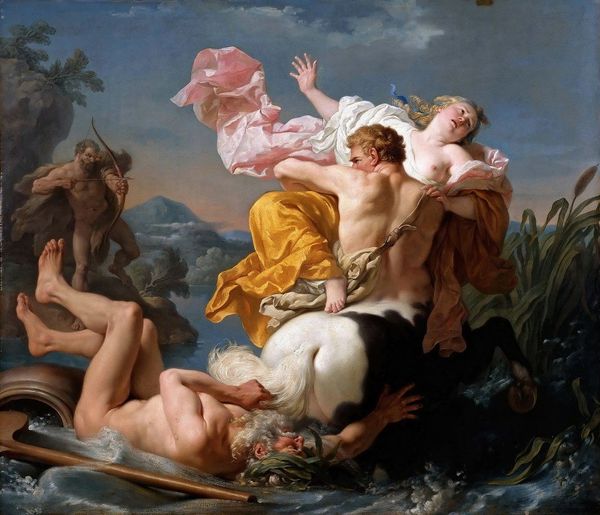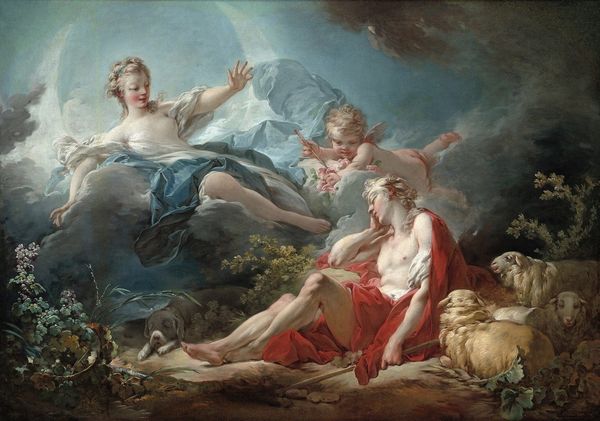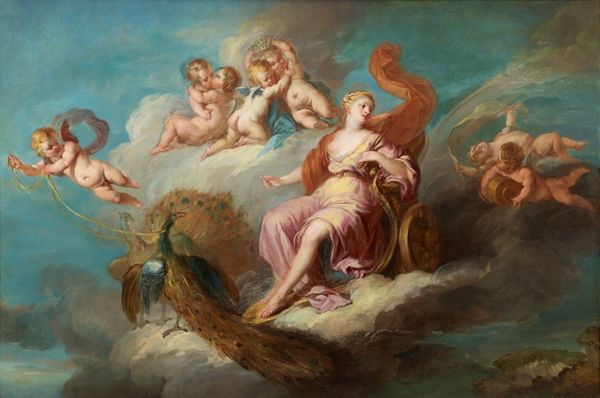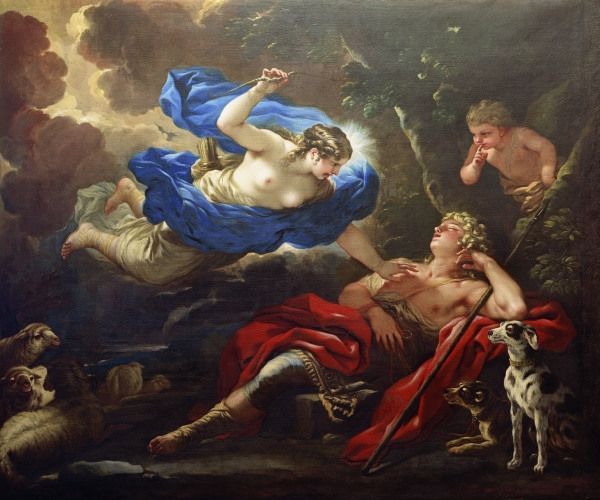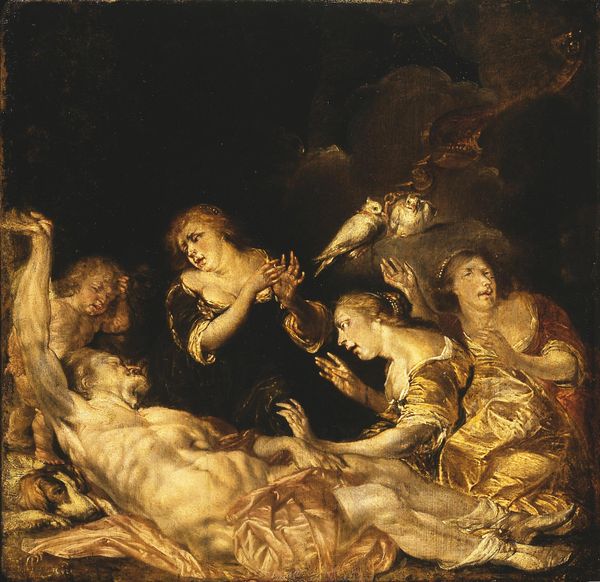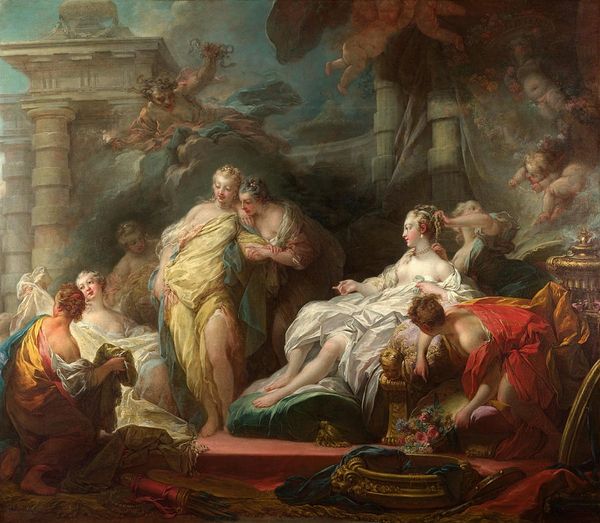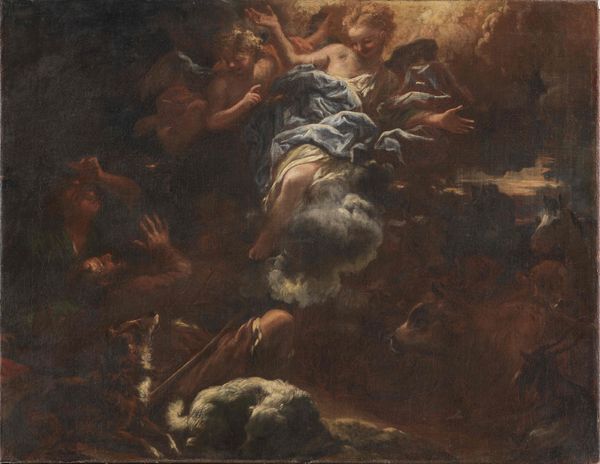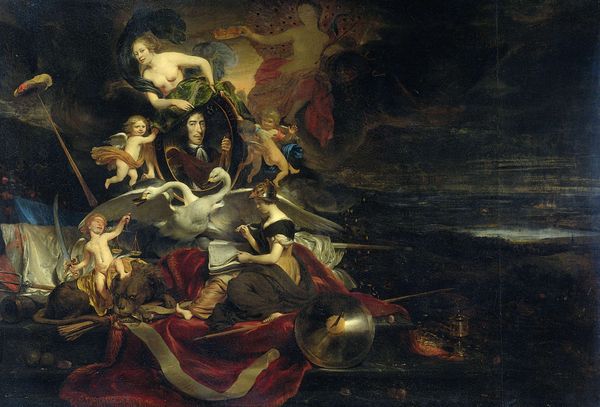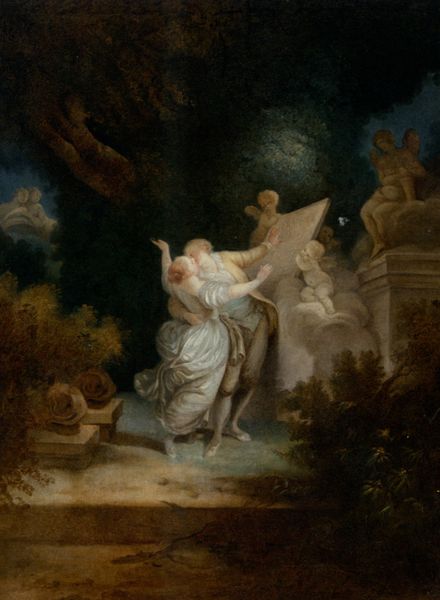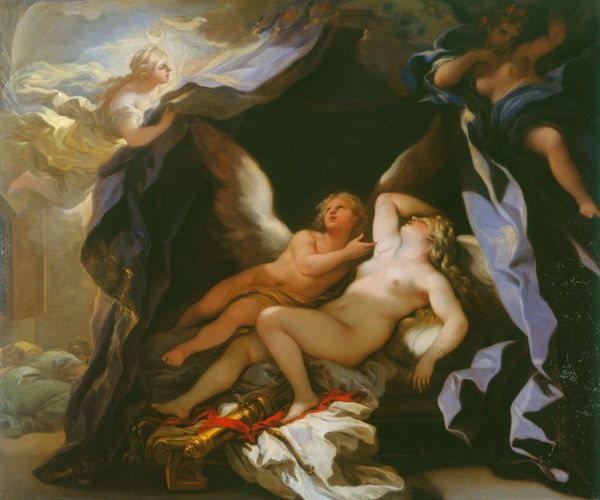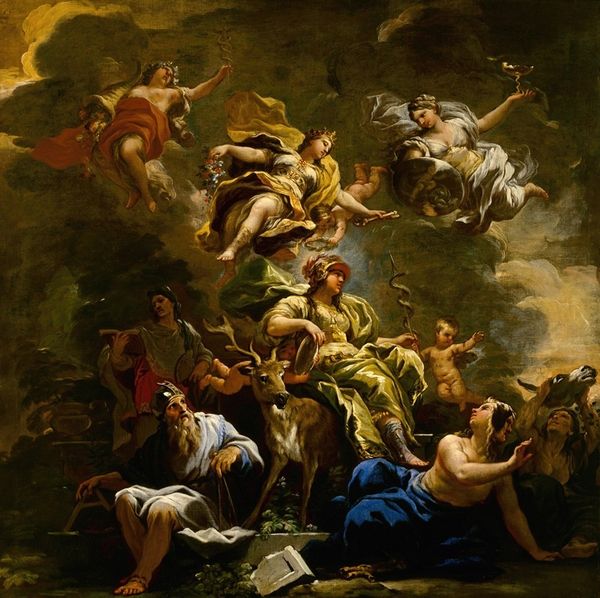
oil-paint
#
baroque
#
oil-paint
#
landscape
#
figuration
#
oil painting
#
mythology
#
history-painting
Copyright: Public Domain: Artvee
Editor: This painting is titled "Rinaldo and Armida in the Garden of Delights," and it appears to be an oil painting by Gaetano Gandolfi, but it’s not dated. It depicts what seems to be a mythological scene in a lush garden setting. The interaction between the figures, especially Armida holding a mirror, feels staged. What does this painting evoke for you, in terms of the historical or cultural context it comes from? Curator: Well, considering its Baroque style and subject matter, it speaks to a period when mythological narratives were often employed to convey societal values and power dynamics. Armida's act of showing Rinaldo his reflection could symbolize the dangers of vanity and the corrupting influence of pleasure, ideas that resonated with contemporary moral concerns of the elite class. Editor: That's a fascinating point. The composition feels very deliberate, almost propagandistic. Are there other interpretations possible, especially concerning the roles of women and the portrayal of "delights" in a social context? Curator: Certainly. We must consider the male gaze prevalent in historical artworks. The portrayal of Armida could also reinforce idealized notions of female beauty and power within a patriarchal society. Moreover, what's presented as "delights" could be perceived as opulent distractions, further emphasizing social status and control. Is the artist trying to tell a simple morality tale? Perhaps. But maybe it’s about so much more. Editor: I see. So, rather than merely depicting a story, the painting engages with the viewers by showcasing certain values about wealth, status and the way women are viewed in relation to beauty, and male control? Curator: Precisely. It offers a visual dialogue that, if properly contextualized, becomes an illuminating glimpse into a specific era's social and cultural intricacies, making us reflect on the public role of art. Editor: That really changes how I see the painting. It's less about mythology and more about the politics of imagery, of societal roles, during the Baroque era. Curator: Indeed! Examining art through this lens helps us understand its significance and how it functions within its historical and societal framework.
Comments
No comments
Be the first to comment and join the conversation on the ultimate creative platform.
